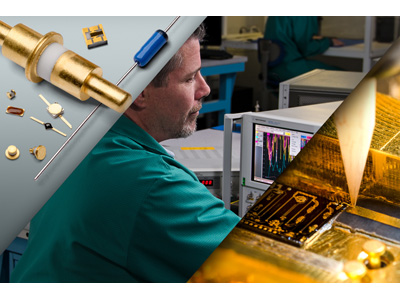The product delivery process is optimized for any manufacturer when they can efficiently leverage their own team member’s expertise in concert with their key outside partners. Optimally, internal engineering experts are putting their skills to work where they can be most valuable―designing and producing prototypes and developing design for manufacturability (DFM) protocols. But all too often you’ll find them doubling as test engineers and assembly technicians, stealing valuable time and energy from more valuable work. This is counter-intuitive to the common goal of any well-managed operation, which is to reduce or eliminate all non-essential tasks in the workforce and streamline the time to market for their products.
Auditing your own design and manufacturing capabilities
The key is often making a design/production audit decision before it’s too late. That’s what manufacturing consultants suggest is the biggest pitfall.
“We understand how challenging the decision to outsource assembly or supply chain services can be,” says Tim Filteau, president of SemiGen. “It takes foresight, and confidence to be willing to analyze your own design/production breaking points. It’s when they actually do break that we’re often called in, however.”
Familiarizing yourself with the capabilities of your industry’s U.S.-based outsources is a first key step. The field is full of job shops to fully-equipped assembly and testing companies. Some even provide key components and the manufacturing supplies you might need quickly for box-builds. Gaining an understanding of the capabilities available domestically can help provide the confidence to step back for a moment and evaluate what your own internal engineering and production teams do best, and with routine. What is left, are candidate topics for further discussing outsourcing.
Making the decision to outsource
Before diving right into a high-volume contract, perhaps you’ll start with outsourcing your lower volume, or more unique hand assembly or testing work. Perhaps your returns/repairs/refurbishment line is taking up valuable resources, and this work makes sense to outsource first to test the waters for both parties.
The benefits of outsourcing can extend beyond assisting with capacity issues, too. It stands to reason that a well-thought-out outsourcing plan also reduces equipment and training costs, and will allow a manufacturer to gain momentum in their product research and development.
“Squeezing out as much gross margin today is vital to our customers. Reducing costs, improving yields and capitalizing on efficiencies is how we help their bottom lines,” says Jim Morgan, CEO of SemiGen in an interview recently.
Profile of the full-service partner
SemiGen’s design and manufacturing center in Londonderry, N.H. is an example of a fully-equipped solution provider in the RF industry. Their services include mixed-signal RF/microwave assembly, box build, module repair and test services, and they’ve invested in developing their own key diodes and semiconductor devices, as well as in stocking brand name manufacturing supplies needed for successful production of hybrids and components. Their team is ready to help with designs, build prototypes, perform high-level testing and handle low to high production runs for various customers in the RF, military, space, homeland security, optical, medical device, and commercial wireless markets. Their 37,000 square foot facility includes a class 10,000 clean room and offers manual to fully automatic assembly.
SemiGen also offers processing of 100 to 150 mm silicon wafers, as well as alumina and aluminum nitride substrates up to 4.25 inches. Services provided include any combination of photolithography, wet etch, dry etch, metallization, grinding and polishing.
Recent investments in high frequency testing and hi-reliability (Hi-Rel) environmental testing capabilities has enabled SemiGen to offer solutions for Hi-Rel screening of amplifiers, FETs, MMICs, transistors, diodes and other active and passive circuits and components, as well. Tests are performed and are delivered with full documentation in accordance with MIL-PRF-19500, MIL-PRF-38534, and MIL-PRF-38535 requirements. Element evaluation and screening options from Class H, Class K, TX, TXV, S-level, as well as custom SCD driven requirements are available.
Another recent investment was the purchase of Ion Beam Milling, Inc. of Manchester, NH in October 2018. Ion Beam Milling pioneered several thin film circuit processing techniques using innovative ion beam milling approaches. This has extended SemiGen’s offerings to custom and standard attenuators, filters, heat spreaders, high power resistors, laser diode sub-mounts, Lange couplers, chip and spiral inductors and transmission lines, to name a few.
At the helm at SemiGen is Filteau, who arrived in January 2018 from MACOM to become SemiGen’s new president.
“I’m excited to be in a position to continue to invest in and grow this important domestic outsource for the RF community,” said Filteau. “We want to be an invaluable partner to everyone we engage with.”
Conclusion
Whether it is frustration over witnessing idle hands or overtaxed machines or a strategic "make or buy" or "repair or replace" type meeting, when questions of design/manufacturing efficiency come up the key is to involve your external partners early. Take advantage of their tribal knowledge and discipline in satisfying customers just like you.


